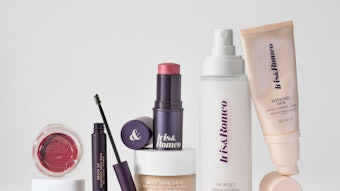Natural and wellness trends continue to impact the beauty industry. Spas and resorts go hand-in-hand with these trends, offering consumers products and services that contribute to their sense of wellness.
Spas in North America are a leading leisure industry, encompassing nearly 14,000 facilities and generating $9.7 billion in annual revenue, according to the International SPA Association (ISPA). Spas are no longer simply weekend retreats, but encompass the lunch hour manicure and massages at the area day spa. Clients want to be pampered with a feeling of luxury and exclusivity no matter how little time they have.
Spas provide a place to tap into that sense of luxury and privilege with consumers; for brands, spas are a distribution point that can set products apart from those sold through mass outlets. Creating a spa destination and a product line may produce added value through consistency in look, feel and service delivery. According to ISPA, 93% of spas operate as a single brand. Through a consistent message and fostered consumer recognition, a brand can efficiently and cost-effectively launch new locations. For the majority of companies that operate in more than one location, 71% still operate under a single brand—demonstrating the rapport a brand can build with its market base, which, in turn, translates into product brand loyalty.
“Opening a spa paves the way for a brand to have access to a whole new type of customer, who would not normally be available to [it],” said Edwin Neill, president, Neill Corporation. “This customer is affluent, informed and focused on health and wellness. Finally, your average spa consumer is not someone you would find shopping in mass retailers, so for new brands, it’s easier to get a spa owner to carry a product than brands that already have a firm foothold in upscale department stores.”
As a result, brands looking to tap into a different customer base are looking to the spa industry. “The current trend in the industry is to see brands opening spas—rather than specific spa brands,” said Alison Howland, director of spa development, Aveda Corporation.
Creating an Experience
Destination and resort spas encapsulate, in part, the spa experience through brands that help create a unique and individualized spa experience. The entire ambiance of the experience encourages consumers to take time to enjoy it. Day spas are about repeating the experience on a regular basis while maintaining wellness. Because of the correlation between sales results, brand exclusivity and the space devoted to products, Aveda works with each of its locations to embody its experience and create signature spa treatments for individual locations.
“All of Aveda’s products and services begin with the professional in mind. We work with an expert and develop the professional treatment. We then identify what are the key products that would enhance the guest experience—which would be the retail component. We then have a complete spa offering: professional authentic spa treatment, professional spa product and retail spa products,” said Howland.
Payot, the Puig-owned Paris beauty house, recently opened a Paris spa that matches products with an experience that encompasses a range of spa treatments developed more than 80 years ago at Payot’s original institute, along with its biotherapy products.
Men, as a target consumer, are not neglected in the growing spa segment. Moxie, with its 30 doors, developed a men’s skin care line designed to achieve treatment grade results. The products, created in its skin care spa, include 15 retail SKUs and 12 professional products. Each product is formulated with natural skin care supplements to complement the natural trend and appeal to men who want to be pampered. Other spas, such as Taiwan’s Marry Me, include fitness machines as well as facial and body tools to define its spa experience. Marry Me also offers makeup, nail treatment and fashion shows. The result is a brand spa that offers products and pampering services with a definite nod to the natural and wellness trends that appeal to a specific consumer base. Spas looking to add supplementary offerings must create consistency between the image and quality of the spa and its traditional services. Brand spas also reflect the conflicting desires of consumers in the beauty segment—ease of repeat purchases with the ability to discover something new.
Day spas, a growing segment of the industry, run into different challenges. “In order to be a successful spa owner, you must have excellent business skills and human relations skills, as well as a passion for helping others,” said Ross. “A lot of people assume that if they package the product and put it on the shelves, it’ll get purchased. That just won’t happen—the retail products need to be part of the treatments in order to be successful.”
Partnerships, word-of-mouth and community involvement also help to build a spa’s reputation. For a brand, these tactics can grow its reputation while encouraging consumers to take the experience home through its product line. At the same time, a brand spa, with its tightly controlled environment, has the advantage, because the consumer has already made a brand choice by making an appointment.
Brands must be careful when entering the spa industry, as a limited selection, lack of qualified staff or uncontrolled growth can reflect poorly on a brand’s image. In China, the Melee Group International has created a network of spas in partnership with department store operator Sunlight Group. The brand has focused on service quality and creating a stable staff. As a result, its growth has been defined largely by market readiness for its brands, reflecting a single strategy for the segment.
Retail and service combine to drive the spa industry toward future growth. Brands looking to capitalize on this trend must offer consistency in both treatments and retail offerings that mimic the treatment experience in order to grow both brand reputation and market share.










